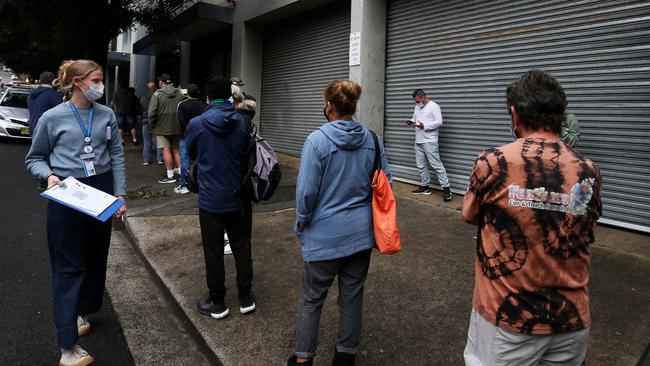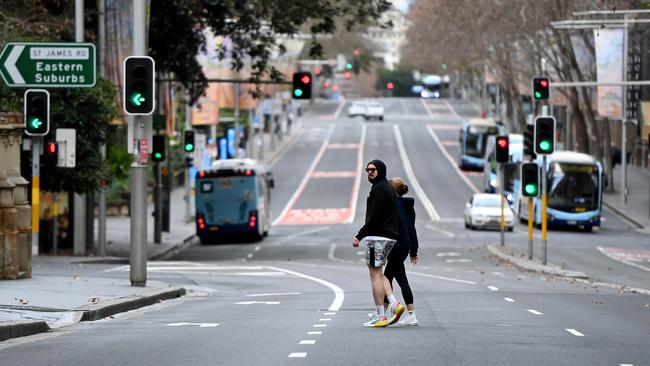
Accordingly it’s important to understand those forces and the potential impacts on both the US and Australia.
I am going to illustrate with two Australian examples which show how these forces are working.
My first illustration is actually from Tasmania, where there is a limited ability to undertake construction in any one year. My Tasmanian friends tell me that if you combine the Apple Isle’s housing, infrastructure, and industrial projects, the amount of building scheduled to take place is about twice the state’s capacity to supply. Much bigger versions of that problem are being duplicated not only on the Australian mainland but in parts of the US.
If we follow past patterns then the shortage of labour, goods and materials so created will explode prices in building contracts and contribute to a spike in inflation which will flow through into interest rates. That theory has been the dominant driver of higher US bond yields (lower bond prices) and increased asset values.
Suddenly a second set of forces is challenging that assumption and nowhere is that better illustrated than in NSW.
Over the last 18 months Victoria and most other mainland sites have imposed severe lockdowns and discovered that this was the only way you could substantially cut infection rates.
Through a combination of good management and luck, NSW residents did not need to go through this experience, but they certainly do now. And they have taken much too long to learn from the other states so the infection rate is rising sharply.
Unless mass vaccination can save the situation, it is quite possible that our largest populated state might be sealed off from the rest of the nation.
The possibility of that taking place is creating new levels of nervousness not only in NSW but in the entire nation.

Similar situations are erupting in the US.
The current US daily Covid-19 case rate has risen by about 40 per cent to around 16,000 and the number of people going to hospitals has also jumped. This is caused by inadequate restrictions, the low rates of vaccination in some areas and the increased infection rate of the Delta variant.
While the increase in infections tends to be concentrated in areas where there is low vaccination, many vaccinated people are also being infected, although in most cases they don’t show severe symptoms.
Pfizer and most of the major vaccine makers are developing booster shots to increase protection from the Delta variant. The US states may try to curb the infections with more severe restrictions but, as we see in NSW, there will be great community objections.
The rise in infections is impacting an increasing number of countries around the globe and wherever it takes place there is great unease. In markets that creates forces that are the direct opposite to those created in recovering economies with inflation and higher interest rates. The conflict between those two forces was the main driver of the gyrations last week with the optimists coming out on top in the final Wall Street session.
But, as always, there are other forces in play.
Part of the global optimism has been based on the belief that China will keep surging forward.
But in recent days China has become apprehensive about sluggishness in its small and medium business sector and has given the banks and other lending institutions the ability to increase their lending rate.
Those who are nervous about the US recovery keep pointing out many of the Biden measures are a temporary “sugar hit”. The shortage of materials ranging from computer chips to timber continues to hold back activity.
And when American and other markets encounter sharp fluctuations it often has severe implications for those that have made highly leveraged short-term speculations that have been proved wrong.
And so when bond prices in the US rose sharply last week, those who had shorted the bonds were forced to cover, so pushing the bond prices even higher and, of course, the yields lower.
Dominating the overall market position is the immense amount of spare cash held in banks and other institutions around the world. And central banks continue to inject money into the system by purchasing bonds other securities. The combination of abundant cash and low rates is a constant upward force behind rising asset prices. If you believe infection rates will keep a lid on the economy and restrict increases in interest rates, then yield stocks become important.
But if the economy is bounding ahead with inflation threatening and higher interest rates on the horizon then stocks that generate good returns in such an environment become more popular.
The US central bank, the Federal Reserve, is watching very carefully for signs of inflation breakouts and seems ready to make a pre-emptive strike.
In Australia our Reserve Bank is more cautious and wants to see actual unemployment falls and higher prices before lifting rates.
The final outcome will depend on whether high vaccination rates can be achieved and whether the vaccines are successful against the new Covid variants.




The sharp gyrations in both the US share and bond markets last week were caused by a new combination of forces that will erupt again. And while we will look to the US for those eruptions, Australia is set for similar experiences.